What about Spanking?
As a medical historian, I’ve spent a great deal of time thinking about how the past can teach us about life in the 21st century. In doing so, I’ve also learned about the many intriguing, inventive, sometimes brutal ways we used to think about health and various medical conditions: doctors were prone to label pregnant women as “hysterical” for hundreds of years; a prominent teething remedy in the pre-modern period was to lance babies’ gums; children whose mothers read a 1925 text called Training the Toddler might have been submerged in cold water to stifle a tantrum. I could go on.
And since my research focuses on pregnancy, pediatrics, and motherhood, I’m especially used to reading startling historical medical parenting advice, like this: “There is a proper and loving way to spank a child… I recommend limiting spanking to one to three swats with a wooden spoon, not a hand. The swats should sting only, not injure… Proper spanking is rare, but it is highly effective in shaping a child’s character and behavior.”
I wish I could say this was from a 1950s Ladies’ Home Journal article, but no — this was written in… 2019.
Because there is such an overwhelming professional consensus against spanking, when The Wall Street Journal published “The Right Way to Spank a Child” in February 2019, I assumed the piece’s title was a ploy, meant to grab attention.
I was wrong — it was actually an impeccably accurate synopsis.
The op-ed, submitted by pediatrician Robert C. Hamilton (he practices in Santa Monica, California), was super-controversial. Hamilton challenged the AAP’s blanket opposition to “all forms of corporal punishment,” saying that the organization was overstepping and incorrectly lumping spanking in with abuse.
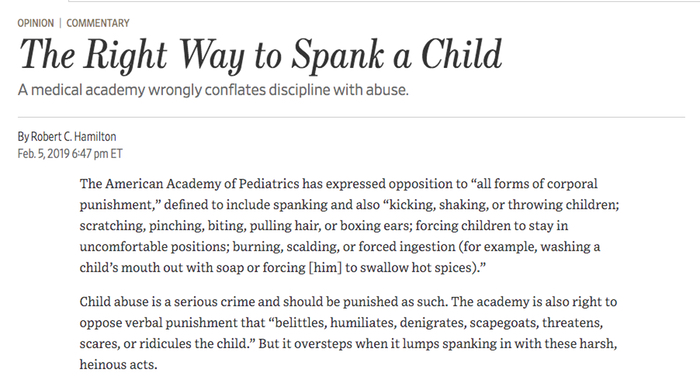
Hamilton (correctly) pointed out that the studies on spanking are subject to bias and other flaws, and that many children who were spanked grow up to become wonderful, caring adults, who often “attribute much of their success in life to the discipline they received and learned as children.” Hamilton asserted that “there is a proper and loving way to spank a child” and offered suggestions as such.
He also cited Biblical passages in defense of spanking.
His brief op-ed ignited a digital firestorm — the online comments following Hamilton’s piece are engrossing, ranging from disgruntled or disappointed readers to detailed descriptions of individual spanking methods, practices, and outcomes. Some media outlets, like CNN and The 74, released dissenting pieces. So did the WSJ itself. Others, like the New York Times, released anti-spanking content in the months to come.
The outpouring was, if nothing else, passionate.
Just a couple of years after NFL player Adrian Peterson was indicted for child abuse charges (he whipped his 4-year-old with a switch), many Americans are still debating whether spanking is effective or appropriate; harmful or helpful.
Many old-timers wax nostalgic about “wuppins” they received as children — which they usually follow up with statements about how… HEY, they turned out okay.
When we discussed writing about spanking, we knew we were entering controversial territory, but we felt strongly about writing this article.
Our MO with the entire behavior series — and all of our work at Lucie’s List — is to provide you with the most up-to-date information, research, support, and experience as possible, and leave everything else up to you. That’s still what we’re after here, but I also want to give you full disclosure at the outset: I disagree with spanking.
Here’s why:
In the last twenty-five years, a new body of research has come out on spanking; it overwhelmingly indicates that spanking children puts them at an increased risk for a host of problems, ranging from aggression and behavior issues to mental health disorders and abuse.
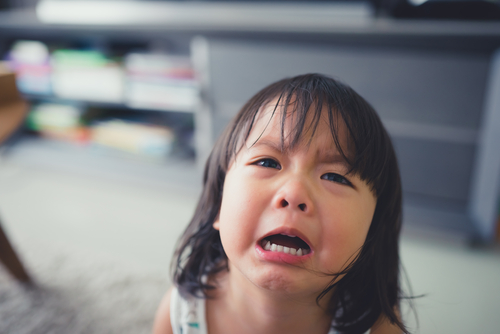
In response to this data, esteemed medical organizations and groups whose mission it is to protect and care for children, like the American Academy of Pediatrics, the National Association of Social Workers, the National Association of Pediatric Nurse Practitioners, and the American Academy of Child and Adolescent Psychiatry, have all released policy statements against using physical punishment as a means of disciplining children. Other groups, such as the American Medical Association, the American College of Emergency Physicians, and the National Association for Counsel of Children, support their stance against spanking.
This is good news, and spanking rates have decreased in the last 2 or 3 decades. But spanking is still prevalent in the U.S. today, and formal and informal directives against it are working against long-standing, deep-seated cultural habits.
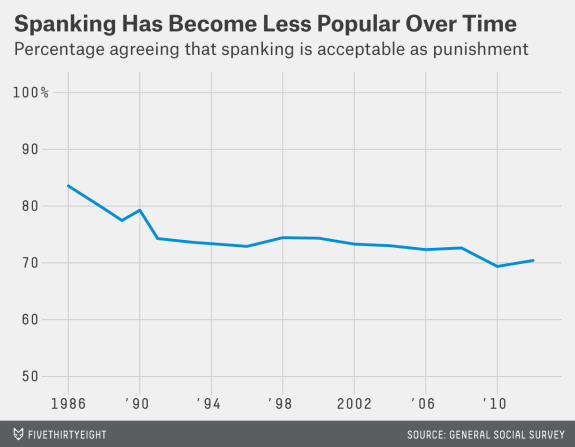
A Three-Minute History of Spanking in America
Spanking has a long history in the United States, but our society has never shared a universal perspective on corporal punishment. It’s really clear, though, that our ideas about spanking have always stemmed from past generations and from contemporary cultural context.
In the colonial period, spanking was an important way to instill Puritan religious and work values among children. Being disobedient was sinful, and strict discipline was considered necessary punishment. For the most part, these trends continued in the 1800s — the perception that children needed to be controlled in the name of salvation remained paramount.
(By the way, what else was going on in the 1800s? Slavery.)
“Leniency with children was viewed as extremely harmful,” since many adults thought it would lead children to question parental authority. (*This was not true among many Native American societies, however, which favored using praise and public reward systems to encourage good behavior among their youth.)
Interestingly, some of these ideas began to shift slightly in the mid-1800s, when Americans started working (quite arduously) to distinguish the U.S. from other countries. In their efforts to cultivate a distinct, “exceptional” nation, some adults started to loosen the reins on their ideas about the necessity of harsh punishment for children’s misbehavior.
Around the turn of the twentieth century, a host of different reformers, collectively known as Progressives, placed new value on specialization, professionalism, data, and expertise. A burgeoning new group of “child experts” started to forward their own ideas about how to “pressure” children into behaving well. (One of their methods: a scorecard to keep track of good behavior across different categories with stars. Sound familiar?)
Parents (cough, mothers), for the first time, were faced with a multitude of professionally-endorsed choices about how to discipline their children.
Indeed, the entire twentieth century has been characterized by an explosion of child-care advice and expertise, to the extent that in regards to discipline, the pendulum has swung back-and-forth between permissiveness and punishment.
For many of our parents and grandparents, who were raised in the WWII- or post-war era, spanking was the norm. It was ubiquitous, and it was not particularly controversial. The boundaries separating the American nuclear family, military discipline, childhood obedience, and the war effort were blurry at best.
When Benjamin Spock’s iconic book Baby and Child Care came out in the mid-1940s, it wasn’t against spanking (Spock actually said that a spanking on occasion was perfectly acceptable), but because it was perceived as a “permissive” text (it allowed for looser schedules, on-demand feeding, and a more relaxed take on parenting in general), Spock was, decades later, “blamed” for causing the counterculture of the 1960s and 70s.
Backlash to the rebelliousness of youth culture in these decades (for which we have to thank, by the way, the Civil Rights Movement, second wave feminism, the gay rights movement, and the patients’ rights movement, among others… plus some very good music) came hard and fast in the 1980s amid the Cold War and newly ascendant conservatism. Spanking once again was upheld as an important way to instill order and authority (all of which was wrapped up in demonstrating American superiority).
And then we started to get some actual research.
Despite an excess of “expert opinions” on spanking throughout the 1900s, there was virtually no research on its efficacy or effects until the late-20th century. Research investigating spanking began to accumulate beginning around 1990, and was growing into a true literature by the turn of the millennium. In 2019, there’s still a lot we don’t know, but the information is lightyears better than it was even a few decades ago, when we were kids.
Repeated studies illustrate that a vast majority of Americans think it’s acceptable to spank children. The sentiment that spanking or hitting your kids keeps them in line is widespread. According to some sources, up to 90 percent of parents in America spank their children. Based on one 2011 study, more than half of parents spank their toddlers.
To spank or not to spank? One parent’s testimony.
“A couple years after my husband and I became parents, the spanking debate raged: I didn’t want to spank our kids; but my husband considered it.
You see, both he and I were spanked as children. But to this day, we still reflect on our experiences differently: to me, spanking was a violent act that ignited nothing but fear (and pain); to my husband, it was a formal punishment discussed beforehand and carried out in a rational, non-violent way and, he said, that deterred him from doing “bad things.”
With this difference of opinion came a major roadblock in our parenting journey. For the first time ever, we, as mom and dad, couldn’t agree on something. And so, we took the time to talk it out. We read studies on spanking; we talked to family members, many of whom were in favor of spanking; we considered our experiences and how they affected us, as kids and as adults; and we built upon our differences to compromise and create a vision for ourselves and for our kids.
The verdict?
We would spank, but in a non-violent, controlled way, and paired with LOTS of communication and compassion; and we would do so very selectively, only in extreme situations or after all else failed.
Little did we know, this vision would die with the very first spank.
That’s right — it only took one spanking for my husband and I to have a change of heart. First, we instantly noticed a drastic behavioral change in our firstborn. He started to hit us, which he had never done before, and became all-around more aggressive. In retrospect, this outcome shouldn’t have been surprising: how could we teach our kids not to hit others and then raise our hands to them? It just doesn’t make sense.
I’ll also never forget the look on my son’s face: a mix of shock, disappointment, embarrassment, sadness, and fear. He was in desperate need of guidance, comfort, and love, and I didn’t know how to give that to him without feeling like a fraud. Not to mention that the guilt immediately crept in — no matter how calm and reasoned we wanted the process to be, it felt as though we were abusing power.
At that point, my husband agreed with me that spanking was counterproductive, confusing for everyone in our household, and fundamentally against the values we wanted to instill in our kids.
And so we changed our minds: we decided not to spank.
To this day, we still have the urge to do it when our toddlers act up, and we definitely snap and yell at times. But we try our best to stick to other approaches: from time outs (for our kids and ourselves), to taking away privileges, to empathizing with their big, big emotions, to screaming into a pillow. The list goes on and on; and as our kids grow and evolve, it evolves with them.”
Anonymous Reader
Spanking has a fervent following in the U.S. — it’s steeped in our nation’s religious politics, family heritage, and ideas about work ethic, authority, and obedience.
“Spanking is a practice that appears to be carried from generation to generation primarily by anecdotal reports of success, cultural momentum and weak science.”
Pediatrician Clay Jones
Spanking is difficult to study. Health professionals can hardly run randomized trials to evaluate corporal punishment and its effects. A substantial amount of data are derived from surveys and self-reports, which are less-than-ideal in terms of evidence.
Plus, there are confounding parental correlations galore — spanking is closely tied to lower-class status, depression, substance abuse, stress, and parental age, among other things. For example, born-again Christians are, on average, 15 percentage points more likely than the rest of the population to spank.
“Sincere parents, who love their children, but are stuck with a literal reading of badly translated verses taken out of context, are utterly convinced they are doing the right thing.”
James Tabor, Professor of Religious Studies at UNC Charlotte
It’s also way more common among parents who themselves were spanked as a child, a phenomenon expert Elizabeth Gershoff says is called “intergenerational transmission.” Spanking continues to spark debate in the African American community, where traditions of spanking run strong (presumably, after the brutal, inhumane treatment many of their forefathers/mothers received during slavery).
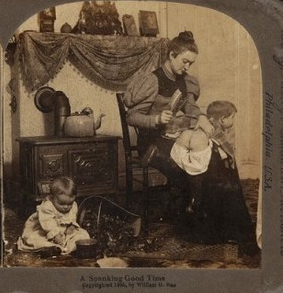
And let’s not forget — kids are all so different, so it’s impossible to say with 100 percent certainty that spanking causes anything. It’s the proverbial chicken-or-the-egg question: are children who are spanked more likely to suffer from behavioral problems because they’re spanked, or are they more likely to be spanked because they have behavioral issues?
These snags are complicated… but the thing is, the experts who study spanking don’t think the research is controversial at all. The foremost among them still agree that the evidence, imperfect though it may be, points to one conclusion: spanking does “more harm than good.”
There are some differences between consciously relying on spanking as a disciplinary tactic and spanking in the heat of the moment, what many in the field refer to as an “adult temper tantrum.” According to the research, both carry the same risks.
Since any kind of discipline is most effective when it’s applied in real-time, the old adage to “wait until your father gets home” is seriously misguided. Young children (like dogs!) are “trained” best when they can clearly connect their behaviors with their consequences.
But even when it’s applied in the immediate, spanking is replete with potential risks — that’s what this whole article is about.
Evidence Against Spanking
The evidence against spanking stems from two overarching findings:
- Spanking doesn’t “work” any better than any other disciplinary method.
- Spanking is strongly and consistently associated with many negative outcomes.
Let’s unpack each point:
Point 1: Spanking doesn’t work any better than any other disciplinary method.
Researchers have shown that spanking can “work” to stop certain behaviors in the short term, yet even then it does not outperform other strategies, such as physical separation. As one expert explained it: in the short term, spanking “works better than doing nothing, but it is not better than alternative means of discipline….”
More importantly, in the long-term, spanking is ineffective. Indeed, it quickly loses potency as a mechanism for behavior modification. In one study, researchers concluded that, over time, spanking was significantly correlated with less compliance — not more.
“So far, there is no scientific evidence to support that corporal punishment is an effective behavior modification technique.”
For many parents, physical discipline is the kind of thing that happens when we switch to our reptilian brains. We’re tired. We’re stressed. And when our kids do something wrong, especially something aggressive or egregious, our patience runs thin.
And when parents are lacking support (emotional, financial, or familial), responding physically to children’s unwanted, infuriating, or dangerous behaviors can feel even more necessary. We can’t stress this enough: many of the parents who are most “prone” to spanking — based on demographics or on their immediate situational circumstances — are themselves in dire need of support and advocacy. Unfortunately, parenting services and resources are not widely available to those who need them. The problem has only grown in the wake of the pandemic.

If you are a parent in need of support, you might want to check if there are any “crisis services” in your area (especially if you’re in familial, personal, or financial distress). In brief, crisis nurseries are intended to provide FREE emergency child care for parents in desperate need of help — for a host of different reasons, ranging from a catastrophe (such as a death in the family or flooding) to violence to wellbeing or a need for parental respite.
The best way to identify if/where these resources exist in your area is to google your zip code/city name + “crisis services.” Some states, counties, and cities support programs designed to provide this kind of aid to families in need of help; other areas are able to offer similar resources thanks to nonprofit and volunteer organizations. Many such centers also operate a crisis hotline. Any given crisis nursery maintains its own separate mission statement and policy stipulations (about children’s ages, care offered, length of care offered, qualifying situations, and parental “need”). As one program in Illinois states: “asking for help is a sign of strength.”
The reality is that spanking does nothing to promote moral development and decision-making skills. In fact, it does just the opposite. The experience of pain depresses children’s learning capacity, making them less capable of learning why something was wrong. Thus, spanking is associated with lower levels of moral and altruistic behavior, such as showing compassion towards others, saying “please” and “thank you,” helping someone who has been hurt, or comforting a friend who appears to be upset.
The bottom line is that spanking is not necessary for disciplining children, and there are no benefits or advantages associated with it other than giving parents an outlet for their frustration and anger.
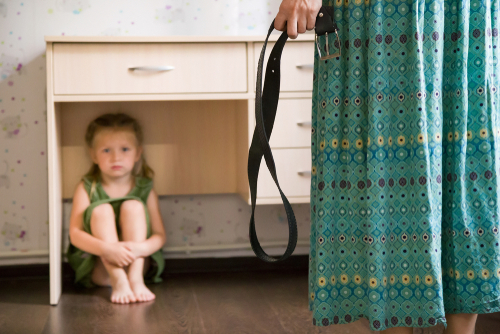
Furthermore, as an approach to discipline, spanking has the potential to do just the opposite of what parents want, which is to help their children learn the how and the why of their misdeeds.
More specifically, here’s why:
- First, spanking models aggression and violence as a means to deal with problems.
- Second, children who are spanked learn to experience (and expect) pain from the people they trust and love most, which makes them more apt to make negative assumptions about people in general, and thus behave less appropriately (lie, cheat, bully, steal, etc.)
- Lastly, physical punishment does not advance internalized thinking or reflection about behavior.
Point 2: Spanking is strongly and consistently associated with MANY negative outcomes.
- Spanking is correlated with physical abuse.
Across multiple sources, studies have repeatedly found that children who are spanked are more likely to be physically abused (also, many would argue that the line between spanking and abuse is blurry). This is because the only way to make spanking “keep working” is to continue to amplify it (as one family member recalled his father beating him: “when the stick stopped working, he switched to a belt”).
The AAP explains: “the only way to maintain the initial effect of spanking is to systematically increase the intensity with which it is delivered, which can quickly escalate into abuse.”
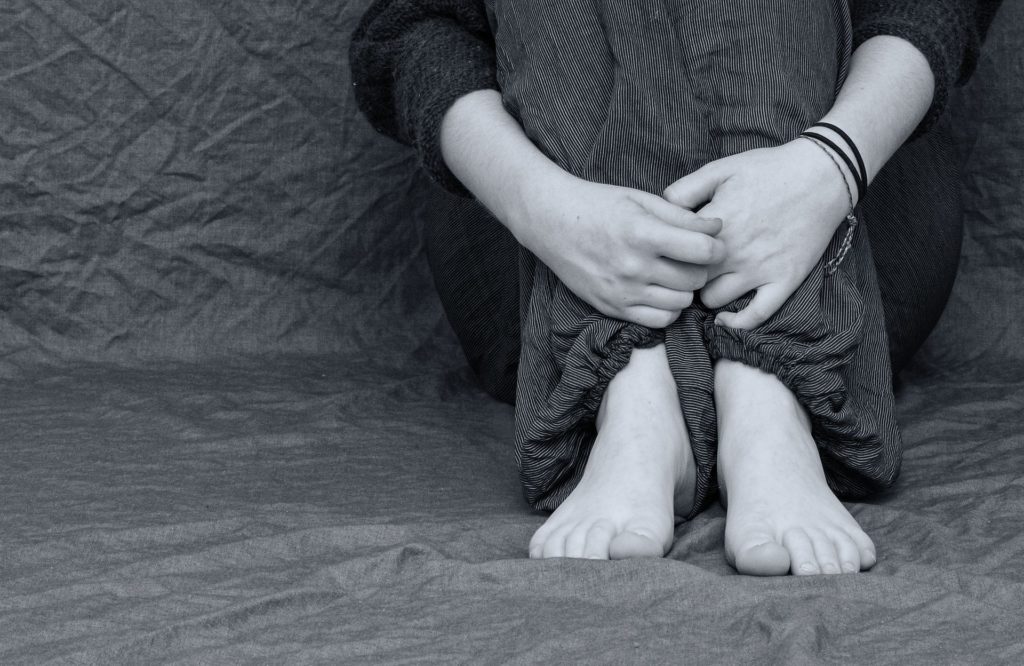
- Spanking is correlated with aggressive behavior of the child.
Research ties spanking to children acting physically aggressive with others, such as pushing, grabbing, shoving, slapping, and hitting.
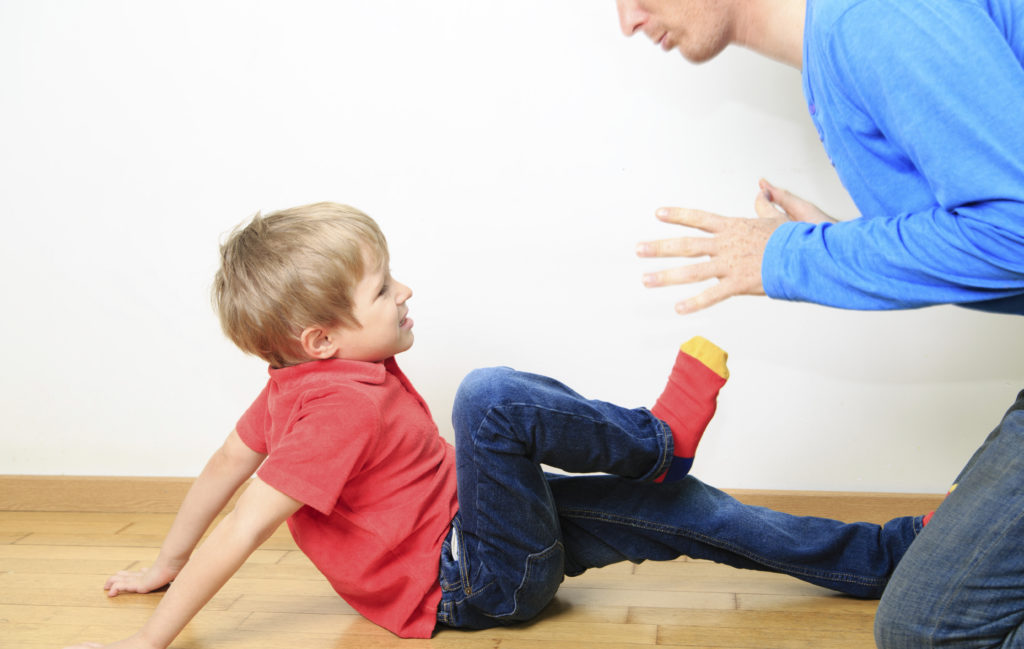
- Spanking is correlated with disrespectful and unkind behavior.
Research indicates that children who are physically punished are more prone to behaviors like lying, cheating, bullying, stealing, breaking things, or not getting along with others.

- Spanking is correlated with children developing mental health problems.
In particular, spanking is linked with depression and anxiety, even well into adulthood. (Multiple studies confirm this association.)
- Spanking has a negative impact on parent-child relationships.
Studies show that children who are spanked can come to associate their fears, pain, and anxiety about spanking with a parent, and thus become fearful of, and sometimes avoid, their parents.
Perhaps you are reading this right now and remembering back to being spanked.
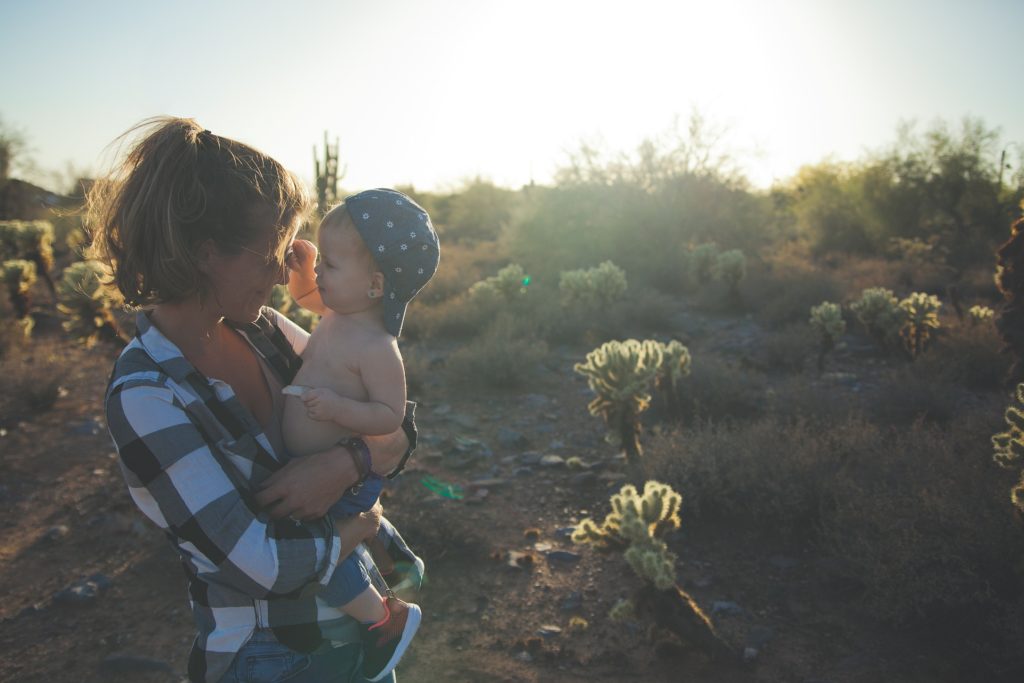
Grandparents
If your parents spanked you as a child, your decision not to spank your own kids may be perplexing to them. That’s because you are straying from something that they may consider a family (or even cultural) tradition. This, in turn, can lead them to take your decision to adopt a different disciplinary approach very personally — as a sign of disapproval and as a criticism of how they brought you up.
If your parents are disapproving of your decision and are vocal about it, don’t shy away from your own beliefs. First, make your stance on spanking crystal clear. If you’re not sure whether your parents will respect your wish, you can choose not to leave your child completely alone with them and continue to engage in open, honest conversations. Talk through the reasons for your decision and listen to your parents’ philosophies. Even if there’s no resolution, remember that you, as parents, have the final word.
Standing up to grandparents on any number of issues — whether it’s in relation to how to feed your kids, family size, screen time, sleeping arrangements, or discipline — can be challenging and overwhelming. After all, they were parents before you were, and now they have a different role, which can be very hard to adapt to and navigate. But if you remain open to a dialogue so that everyone (including the children) feels respected and valued, it may at least alleviate conflicts.
*To be clear: spanking does not cause any or all of these things. But researchers who study these issues liken the evidence linking spanking to negative outcomes to the evidence linking cigarette smoking to lung disease.
When doctors first discovered the connection between cigarettes and lung cancer, it was entirely correlational. But the patterns were consistent and powerful enough to suggest more.
In the same way that smoking puts you at an increased risk for lung disease (but smokers are not guaranteed to develop lung disease), spanking puts children at an increased risk for all of these problems.
And the correlation runs on a spectrum. Just as a two-pack-a-day smoker is at a higher risk than someone who smokes two cigarettes a week, the more frequently and severely a child is spanked, the higher that child’s risk.
In line with the smoking analogy, it took decades for smoking rates to drop, even after the scientific community agreed that cigarettes were a major contributor to the development of lung cancer. Spanking will likely be the same — if our cultural norms change, it will happen generationally.
Physical punishment, in other words, is a risk factor for some very serious, negative problems that we assume all parents want to avoid for their children.
These negative outcomes are not unique to the U.S. — these studies have been replicated around the globe, in countries as diverse as Canada, China, India, Italy, Jamaica, Jordan, Kenya, the Philippines, Singapore, Thailand, and Norway (and more).
I’ll end on one final note. There has been a growing international movement in the last 20 years to make corporal punishment illegal.
Thirty-some-odd countries have done so, instituting legal penalties for physical punishment in the name of human rights. This sprang from a 2006 treaty produced by the United Nations Committee on the Rights of the Child. The treaty called physical punishment “legalized violence against children” and called for its elimination in all settings, “however light.”
As of November 2019, one hundred ninety-six countries supported this assertion.
One nation that did not? The United States. [facepalm]
Maybe it’s time for America to follow in the footsteps of other countries. After all, humans have human rights; and children are humans. They have a right not to be hit.
I know what it’s like to feel beyond frustrated with your child. I know what it’s like to want to shake a tiny human into submission or silence. But how could I help my son work through a temper tantrum if I threw one myself? How could I teach him to be tender and kind to his baby sister (and to never hit her) if I resorted to hitting him when he didn’t behave? What would I be teaching him by spanking him?
Researchers, pediatricians, psychologists, and parenting gurus across the gamut tell us that there is nothing redeeming about spanking: it’s more harmful than helpful. And for the first time in history, we have a wealth of evidence to back that up.
So what can parents do to correct their kids’ negative behavior?
Come learn with us about other more effective, safer ways to manage the insane ups and downs of parenthood. We’ve got you covered with our behavior series, our discipline manifesto, and discipline strategies, all backed by research and families. We promise you’ll feel good about these approaches.
And so will your kids.
Thank you for taking the time to read this. Be well!
What are your thoughts on spanking? Leave a comment below ~
Thank you so much Brit for taking the time to write this beautiful and helpful article.
Thank you for this very well-researched article. From my own personal experience, I can tell you that naked whippings with a belt did not contribute anything positive to my life. My children and grandchildren have never been spanked and are all very successful and happy.
I have taken the time to study my own damage from spanking begging only in mid life after my mother passed away. I’d been drawn to compulsive desires to be spanked, a form of sexual masochism even before my mother had stopped spanking me. I learned that this behavior is the result of sexual arousal occurring of me as a child who was too young to understand what it was that was happening as my mother ritually was disrobing me partially for my punishment. This desire only became stronger as I matured. With the advent of the internet I learned other adults had this same desire and sadly many were parents who believed spanking their children was harmless. The fact is human culture has socially reached a point where it is not accepted consenting adults can engage in spanking as a part of their intimate sexual life. Sadly these same adults carry this intergenerational sexual addiction with spanking by finding consciously in some cases and subconsciously in many others a degree of motivation beyond discipline that provides them sexual gratification in complete privacy and with total moral criminal immunity an auxiliary reason to spank their children. While this behavior seems astonishing to the public it is secretly more common than anyone wishes to admit. I suffered the same cultural conditioning that led me to spontaneously spanking my first born child, my son once or twice, but it was not a drawn out ritualized punishment with nudity of any kind. My own self awareness of my masochistic problem convinced me to end that as discipline technique and I never touched my son or younger daughters after that day. This damaging side effect of sexual damage of children from spanking is rarely mentioned by professional health care and mental health care workers, it’s too controversial and almost universally denied. Please add this mental health problem to your reason to end all spanking of children, they deserved to have their own sexual development be free from parental influence and live without this common secret form of sexual addiction!
Thank you for this very candid comment. We did not explore this aspect of spanking, but yes, it’s certainly another reason not to!
Thank you for allowing me to post this in public, I’d give my right arm to have this knowledge understood as a reason to ban all spanking of children!
As a black man (soon to turn 50 this year), I can tell you that I am still unpacking and coming to terms with my own trauma as a child abuse survivor. I have said for years, “When you hit a child, you teach a child to hit.” The message you receive is that THIS is how you resolve conflict. You assault someone. I was afraid my whole childhood…afraid of everyone and everything. As a result of this culturalized curse, I have experienced (among other things) heightened aggression, hypervigilance (look it up) and what seems to be an ever-emerging social anxiety. These days, it seems the only time people are concerned about child abuse is if it is of a sexual nature.
Children have died from physical abuse at the hands of their own families for generations. Most people have no idea unless I get to know them enough to discuss it. Thank you for the platform to even say these things. I say to the black and Christian communities: Jesus never hit anybody. Stop assaulting your children.
Wow — thank you for this powerful personal story and insight, Michael. We so agree with you, and so appreciate you weighing in. With children at home more than ever before on account of the pandemic, this is feels even more urgent right now.
Whether it’s intended to be or not, spanking is also a form of sexual abuse.
Yes it is, especially if your parents make you get completely naked and whip your bare private parts.
Adrian Peterson stripped his 4yo son completely naked and whipped the little boy’s bare penis with a switch until it bled! Now look me in the eye and tell me with a straight face this wasn’t sexual. Of course it was. Whipping a little girl’s bare vulva is sexual too.
It’s awful – and yes, inherently sexual.
My great nephew who is 3 years old recently visited with his father who is my nephew and his mother. As soon as came into my house he touched the remote to my floor lamps, went outside to play with the door bell numerous times, and touched the buttons on the home base for the cordless phone. He was not spanked nor given time out. They say it is normal behavior for his age. I disagree and felt that swat on the rear with a firm “no” should have been done. Am I wrong with thought?